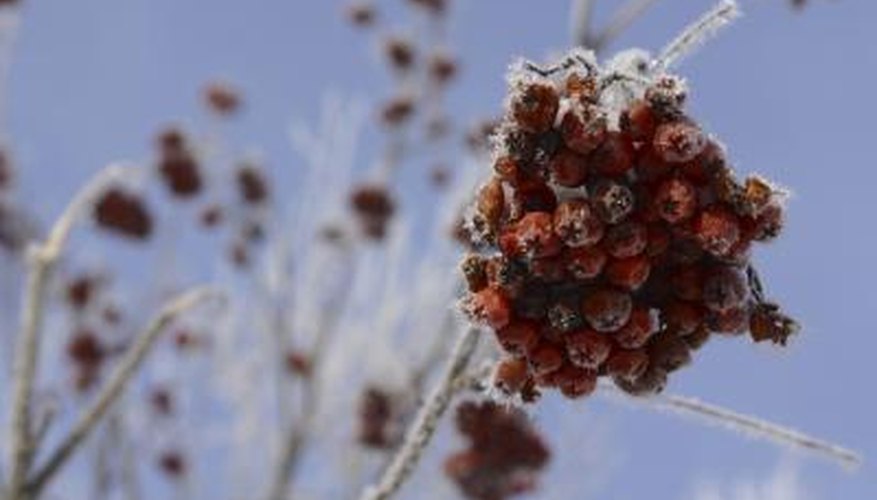The rowan tree (Sorbus aucuparia), also called the European mountain ash, grows to a height of approximately 12 m (40 feet). A native of Europe, Russia, North Africa and parts of Western Asia, the tree has become a popular landscape and street specimen in North America.
Growth
Plant the rowan tree in full sunlight for the best growth. It has a moderate growth rate. During the spring, it produces white flowers, followed by clusters of orange berries. The berries are adored by songbirds and some wildlife. Each cluster can contain up to 40 berries.
- Plant the rowan tree in full sunlight for the best growth.
- The berries are adored by songbirds and some wildlife.
Planting requirements
The tree requires well-draining, slightly acidic soil. It prefers moist conditions and only tolerates drought moderately well. Rowan trees grow best regions colder than the UK. However, it will grow in the British Isles. The tree is short-lived and does not like areas that suffer excessive heat.
- The tree requires well-draining, slightly acidic soil.
- The tree is short-lived and does not like areas that suffer excessive heat.
Warning
The rowan tree is susceptible to fire blight bacteria, which can kill it if the disease girdles the tree. There is no cure, but pruning away infected branches may help. Avoid applying high-nitrogen fertilisers to the tree when fertilising, which increases the tree's susceptibility to the disorder.
